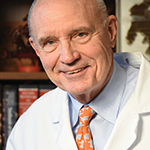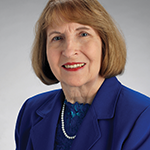He chose rheumatology because it offers a better work-life balance than other disciplines. “It came down to lifestyle,” he explains. “But I also found it very cognitive, which I enjoyed.”
Early on, writing, not medicine, was his initial career choice. When he was 12 years old, he vividly remembers advice from one of his teachers that probably changed the course of his life.
“My teacher said that writers starve in this country. At the time, I didn’t know that writers starved everywhere,” recalls Dr. Malik with a smile. “In the 1990s, as was the custom in Pakistan, I was told to either become an engineer or a doctor.”
He found giving up writing unthinkable, so during his first two of five years of medical school, he attended classes, played the guitar and wrote horror stories—not necessarily in that order. At the age of 19, he was hired as an assistant editor for a fantasy magazine, Deep Magic, and wrote a 25,000-word novella the magazine published.
“I always thought of myself as a horror writer,” says Dr. Malik, who suspects that if he had lived in the U.S. as a teenager, he probably would have embraced the goth subculture and lifestyle. “While I absolutely adored fantasy stories and poetry, later I shifted toward reading more horror.”
Perhaps he was afflicted by the starving student syndrome, but by his third year of medical school, he says, “I had to get serious about medical school. So I stopped writing for eight years, from 2004–2012.”
Beyond Blood & Terror
Looking back, he realizes how much he missed writing during those years. That may be why his writing has exploded over the past decade, with the publication of more than 30 short stories in the horror, science fiction and fantasy genres.
His stories aren’t simply about scary-looking monsters or aliens gobbling up people or destroying cities. They have underlying societal messages that focus on deeply felt personal issues.
Take his short story, The Vaporization Enthalpy of a Peculiar Pakistani Family, which is about a brother and sister who experience drone attacks in northern Pakistan. By the end of the story, the brother’s fury physically transforms him at a quantum level. In essence, he becomes the personification of pure rage. That story won the Bram Stoker award in 2015 from the global Horror Writers Association.
Currently, Dr. Malik is working on a haunted house novel set on the border of India and Pakistan. In 1947, British India was partitioned, ending 300 years of colonial rule. Two nations were created: India and Pakistan. But the mass migration of Hindus, Sikhs and Muslims on both sides were haunted by communal attacks, resulting in the bloody murders and deaths of nearly a million people.


